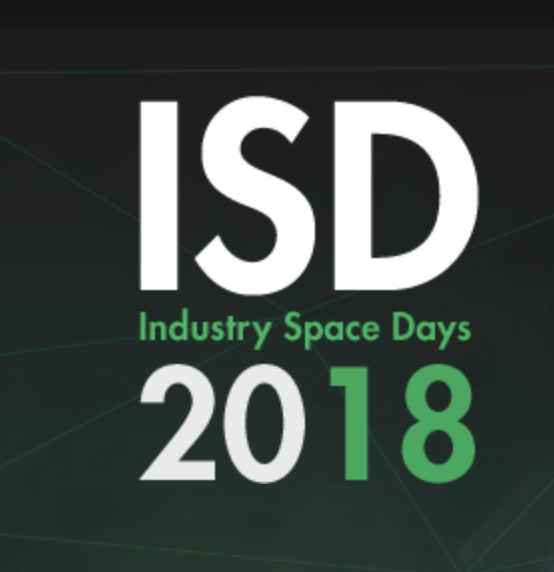To gauge the present state of mind of the GNSS and PNT community, the state of play in application development, and the state of the art in positioning, navigation and timing technology, we asked four international experts for their perspectives. Here are the questions posed to them.
Based on what you heard, saw, said yourself, or wondered during September’s ION GNSS+ 2019 conference:
• What is the biggest challenge— whether technical or policy-related, or other—now facing the GNSS/PNT community?
• How can/should the community best respond to that challenge?
• What avenue(s) of exploration/integration hold most promise?
• What new technical development drew your interest at this year’s ION GNSS+?
• What’s the most exciting or intriguing thing you saw or heard or presented at this year’s conference?
Here, in no particular order, are their answers. Greg Turetzky, an industry veteran with work experience at Trimble, SiRF, CSR and Intel, opined “GNSS has been around for over 30 years and one would think the industry might have stagnated. My visit to ION this year convinced me that couldn’t be farther from the truth. The technical progress and ongoing challenges in multiple application areas were clearly on display. There were plenty of interesting papers, new offerings from exhibitors, and the job board was overflowing.” Turetzky, now an independent consultant, leads business development for a venture capital-backed startup still in stealth mode, building a next generation GNSS IP core and cloud-based positioning engine. That description alone attests to the vitality and growth underway in this market. Oscar Pozzobon, founder and technical director at Qascom, an engineering company offering security solutions in satellite navigation and space cybersecurity, related that “I like to mention what Prof. Per Enge revealed to me once: ‘In the 80’s we have been working on the availability, in the 90’s on the integrity, after 2001 we have been working on the accuracy, and now we are in the decade of security.’ “It is interesting to note that none of these challenges are solved: availability, integrity, accuracy and security are the main fundamental open challenges of the future.” Alright, then. Let’s take them one at a time, these key unsolved challenges.
Availability
Today’s multi-constellation environment and the open predilection for sensor fusion of multi-technologies may finally fulfill longstanding desires for indoor positioning. Satellites, possibly hundreds of them, with multiple signals of varying bandwidth on several frequencies can fulfill the evolving requirements for safety-critical applications. Availability has a dual meaning, in a sense, however. One can reach out for a plenitude of GNSS signals, yet an environment rife with interference, whether intentional jamming or spectrum encroachment by other radio-frequency technologies, can stymy that reach. Protect, toughen and augment goes the gospel preached by Dr. Parkinson. Robustness against interferences can take many forms—as many as required by the many forms of interference itself. “I think we have the challenge to demonstrate how resilient GNSS receivers can actually be,” comments Sandy Kennedy, vice president of innovation at Hexagon Positioning Intelligence. “We hear a lot about threats to the signal in space. We don’t hear as much about what can be done to resist those threats. We need some framework to discuss and demonstrate the resilience of commercial GNSS products. GNSS is a powerful technology and it should never be written off as too vulnerable to rely upon.” Turetzky adds “I believe the biggest challenge facing the community is still spectrum protection. As wonderful and valuable as GNSS is, spectrum is still more valuable for other applications and we must continue to protect it.”
Integrity
The requirements for integrity continue to evolve as well, particularly in safety-critical environments. This term can now be expanded to include virtually all highways and roadways, with the imminent arrival of driverless cars. One could argue it also includes all airspace above 2 meters, with the prospect of many, many drones delivering or performing other tasks in urban environments. “It is public knowledge,” says Pozzobon, “that all SBAS and GBAS are considering the implementation of authentication of their data. Trust between systems and safety-critical decisions based on systems providing different information will be part of this challenge. “I like the idea of technology in the future that can offer 1cm trusted and assured position anywhere on Earth and in space. That would mean 1 cm accuracy, where the accuracy is estimated with all secure signals, integrity is provided with high rate and multipath is excluded with high reliability. “How can you achieve that? You simply need all systems providing an authenticated and robust signal, some good ground- and space-based augmentation providing authenticated data on robust signals, some good aiding from the ground, secure software and hardware on the GNSS chip, an optimized use of the signal in space, and space service volume (SSV) capable to track 4 systems, 4 SBAS, 3 frequencies (that’s supporting almost 150 channels in a receiver!)” That’s not too much to ask, is it? Accuracy This is a double-edged sword. The more you get, the more you want. Yet we continue to draw upon a growing supply. “I was particularly impressed by several presentations at ION GNSS+,” says Thomas Pany, professor at the Universität der Bundeswehr München, “that clearly demonstrate that highprecision (cm-dm) can be achieved today by cost-efficient technologies in (sub-)urban environments, employing sophisticated carrier-phase algorithms and inertial aiding. It appears to me that precision navigation technology is getting ready to enter the mass-market. “There are still many technical aspects to work on and to improve. They are complex from their nature, and finding experts to work on them is a challenge for every organization. It is also a challenge to understand in what time frame the respective applications (autonomous systems, drones, augmented reality devices, and so on) actually will benefit from precision positioning.”
Security
Finally, security. “I believe that the biggest challenge of the future will be position and timing trust and accuracy,” says Pozzobon, and indeed he has made that his livelihood. “Define this as assurance of the signal source, assurance that no one interfered in the signal path between the satellite and the receiver, assurance that the software performing the signal measurements and position estimation is trusted. “This means that every single source of positioning must be authenticated, and the challenge applies to four systems, four SBAS, various GBAS, and so on. The challenge on the receiver software and hardware security extends then to billions of devices.” Help can come from unexpected sources. Namely, other satellites. “The most exciting thing I saw was the ability to detect spoofing from space,” recalls Pany. “The results were not only surprising, they will have impact on future GNSS band monitoring. The work also demonstrated that combining two established technologies, in this case software receiver for radio and the International Space Station, sometimes yields something completely unexpected.”
Final Word
One key challenge remains: that of integrating efforts addressing all the other challenges named. “At the moment the main challenge is to combine discussions and requirements of the different communities.” Concludes Pozzobon. “For example, the groups working in high accuracy do not iterate with groups working in high availability against interference, or the groups working in integrity do not iterate with the groups working in authentication. SBAS is a practical example: do you first authenticate and then apply integrity and accuracy information, or do you first apply the integrity and accuracy information, and later on you will know if you have been spoofed? Similarly with high availability. I have seen requirements for four constellations, dual frequency, to increase the availability that do not take into account that a dual-frequency jammer would compromise all systems.” How to continue feeding the fire, so to speak? By gathering and presenting and discussing, in the time-honored form of scientific inquiry. For upcoming opportunities to do so, see the GNSS Timeline page at the back of this issue.






